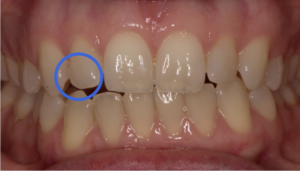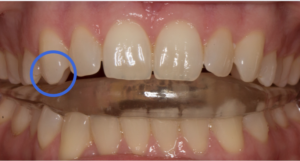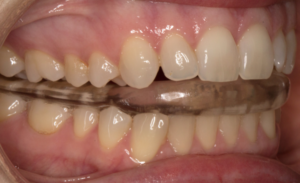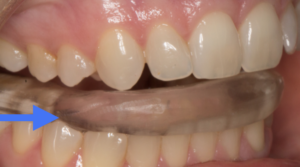This anterior bite distortion shows an uneven amount of anterior open bite. The upper right canine looks as if it never touches the tooth below, and is called a non-functional tooth. However, even a canine out of position can receive sensory input from a food bolus. Designing a splint to engage this tooth with “kissing” contact during lateral excursions will reawaken the sensation of normal function on this otherwise out-of-position tooth. This sensory processing of tooth engagement is important for normal neck mechanics.


Note in picture with patient sliding lower jaw to Right (photo on right) how there is slight contact.


